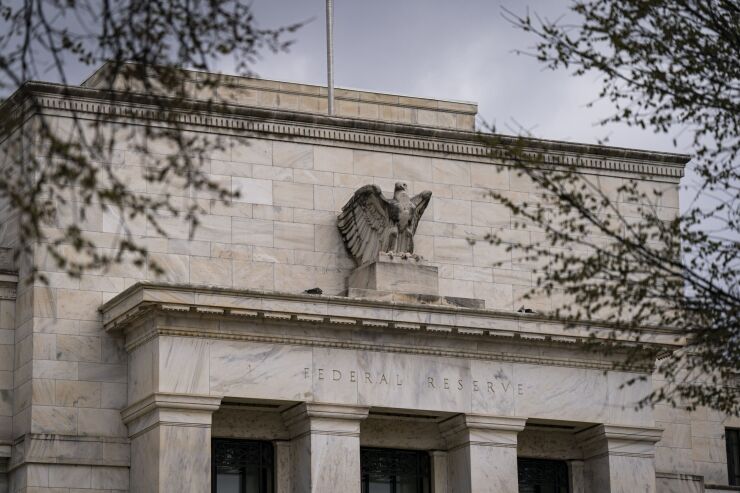
In the wake of recent bank failures, regulators have taken measures to protect all deposits at these banks, not just those insured by the Federal Deposit Insurance Corp. To do this, the Federal Reserve is accepting securities at par, essentially taking on the maturity mismatch of these banks and stepping in as lender and liquidity provider. In effect, these deposits have been mutualized and, by extension, so have all deposits in the country. It does not matter whether money is at a community bank, a regional bank or a brokerage bank, that money is safe, and any losses are contained by passing around the hat to other banks.
There are legitimate questions about the roles management, regulatory oversight, changes in monetary policy and other issues played in the demise of these banks. Regulation and other fixes will be discussed. But this is about more than regulation — it's about how the system was designed. The fact is people and businesses have very little choice but to put their money in institutions that are licensed to take risks that can cause those deposits to evaporate. These banks failed doing what the system allowed them to do. It is time to offer Americans a safer and better choice.
Banking is a relatively simple concept. Banks take short-term deposits and turn them into long-term loans. Deposits are not just linked to, but a requirement for, lending. Banks require operating accounts on which they pile other services — some for the benefit of the client, many for the benefit of the bank. Banks don't turn away deposits — or clients — they just look for risk assets to make profits off excess deposits.
This risk mismatch is the heart of the 'bundled' banking system, and when things go bad, the depositor is the one who panics. While this might have been the only option in a different century, we now have the technology to separate the operating account from the attendant loan risk of the institution that holds it. What we need is a new framework that allows people — and more importantly businesses — to keep deposits in an operating account without bundling them with the kind of risk that institutions are willing to take to satisfy shareholders.
Unbundling is already happening. Payments have been unbundled from banks for years. Capital markets are creating new sources for funding, and there are lenders that are financed elsewhere. Unbundling deposits is the next step and would offer businesses and consumers true safekeeping of their operating accounts. There are several ways to do this. For one, depositors could 'face' the central bank rather than an individual bank. This may sound like a radical idea, but it is technologically feasible to allow depositors to safekeep money at central banks through central bank digital currencies. Electronic wallets for CBDCs could be the modern equivalent of operating accounts with attendant payments and interest-earning capabilities, and with the total of reserves from these wallets acting as deposits in an omnibus account at the central bank. In so doing, these deposits would be safe.
Deposits in an omnibus account at the central bank could be available to lending institutions under the same regulatory and insurance architecture we have today, except those institutions would avail themselves of these deposits from the central bank, rather than individual depositors. Access to these deposits could be matched with the lending needs based on supply and demand, eliminating problems resulting from using excess deposits at individual banks to chase yield. This approach would not prohibit a lending institution from offering safely custodied investment products or from issuing bonds and other term securities to fund lending, subject to current regulatory oversight.
This would also allow the marketplace to create the mechanisms through which all other financial services are delivered efficiently while the central bank provides the most important function — protecting deposits. It would ensure omnibus deposits are used by regulated issuers of loans with oversight to ensure safety and soundness, and with controls to manage risk and moral hazard.
What would this mean for the current banking system? Could banks still accept deposits, in effect competing with electronic wallets? Could banks be 'ring-fenced' wallet providers? How would you protect other benefits of local banking, particularly the services customers really like and need? These are valid questions with good answers, and it is time to evaluate them rather than putting another bandage on an old wound.
In the U.S., unbundling deposits from lending would offer Americans choice within a safe, efficient and convenient system. Yes, it would put the Fed in the middle of the financial system, but it's there already. It has been the price-setter for funds and the yield curve for years — and the backstop for bank runs. This simply makes permanent the job it ends up doing anyway.






